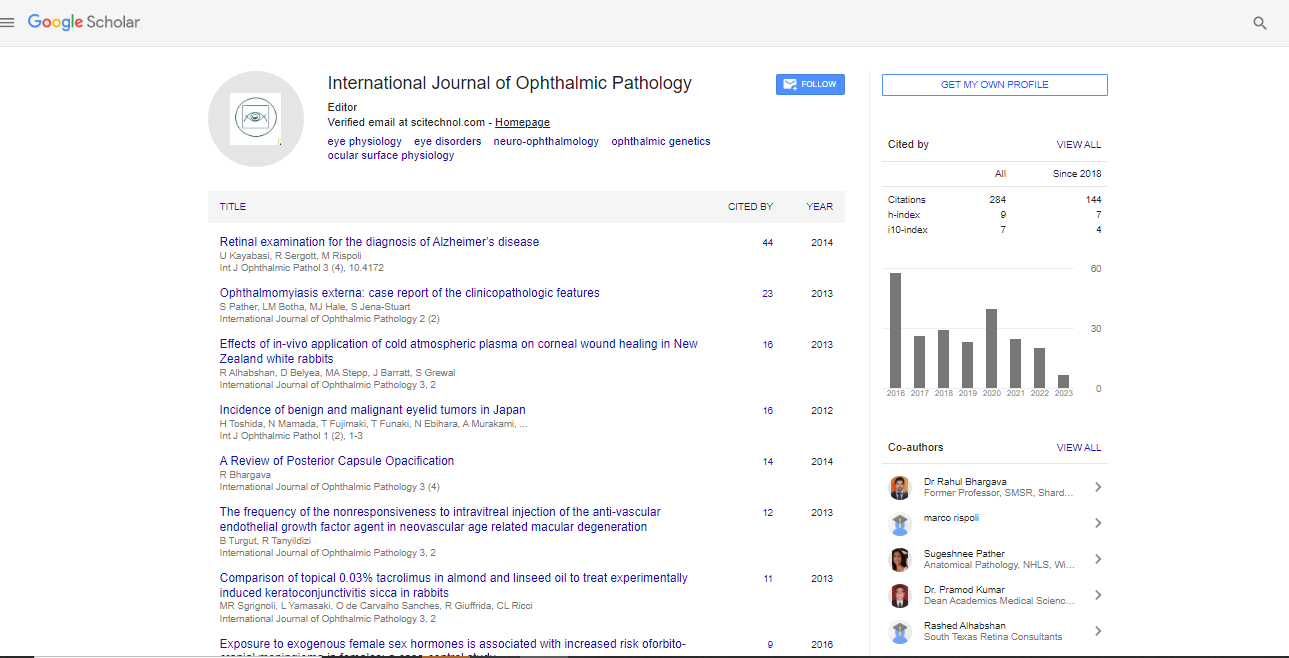Neuro-ophthalmic aspects of drug toxicity
Shlomo Dotan
Hadassah-Hebrew University Medical Center, Israel
: Int J Ophthalmic Pathol
Abstract
The toxic optic neuropathies are typically characterized by subacute or chronic, bilateral, symmetrical and painless loss of vision. Treatment is initiated by recognition and drug withdrawal. Historically, methanol (though not a medication), ethambutol and isoniazid were the first to be recognized as neurotoxic. Later, cyclosporine, a widely used immunosuppressant and other chemotherapeutic agents, like; cisplatin, carboplatin and vincristine were recognized as having neurotoxic adverse reactions. Amiodarone-associated optic neuropathy has been widely discussed in the ophthalmic literature less than half a century ago. It is still controversial whether sildenafil and other phosphodiesterase-5 inhibitors prescribed for erectile dysfunction, cause visual loss by triggering ischemic optic neuropathy. Vigabatrin, used around the world as an antiepileptic drug, was reported to cause irreversible visual field defects in children. Infliximab, an anti-tissue necrosis-alpha monoclonal antibody currently in use for granulomatous diseases, is also known to cause toxic optic neuritis. A long list of reported drugs is associated with increased intracranial pressure, though not confirmed by controlled studies. Vitamin A derivatives, corticosteroids, tetracyclines, fluoroquinolones, gonadal hormones, indomethacin, lithium and tamoxifen are just a small part of this list. Abnormalities of eye movements, including nystagmus and inappropriate vestibulo-ocular reflex are reported at toxic levels of neuroactive drugs like: diazepam, methadone, phenytoin, barbiturates and chloral hydrate. Drug-induced disturbances of neuromuscular transmission, occurring at the pre-or-post synaptic levels, include prominent ptosis and ophthalmoparesis along with variable degrees of extremity muscle weakness resembling true myasthenia gravis.
Biography
Shlomo Dotan is working as the director of the Neuro-Ophthalmology Service at the Hebrew University-Hadassah Medical Center in Jerusalem for more than two decades. He is part of the Editorial Board of the esteemed journal - Neuro-Ophthalmology. His major research project in the past was The Optic Neuritis Treatment Trial Study and The International Optic Nerve Trauma Study which were published in The New England Journal of Medicine and several ophthalmological journals. He is currently involved in several scientific projects investigating therapeutic aspects in MS, NMO and NAION. He is member of the Israel Medical Association, Israel Ophthalmological Society, North American Neuro-Ophthalmology Society, and American Academy of Ophthalmology, European Neuro-Ophthalmology Society, and the European Ophthalmological Society. He has been giving lectures worldwide on various ophthalmological and neuro-ophthalmological topics and has published articles in several prestigious medical journals. He has been part of many esteemed conferences held in Europe, including Israel.
E-mail: docdotan@smile.net.il
 Spanish
Spanish  Chinese
Chinese  Russian
Russian  German
German  French
French  Japanese
Japanese  Portuguese
Portuguese  Hindi
Hindi 